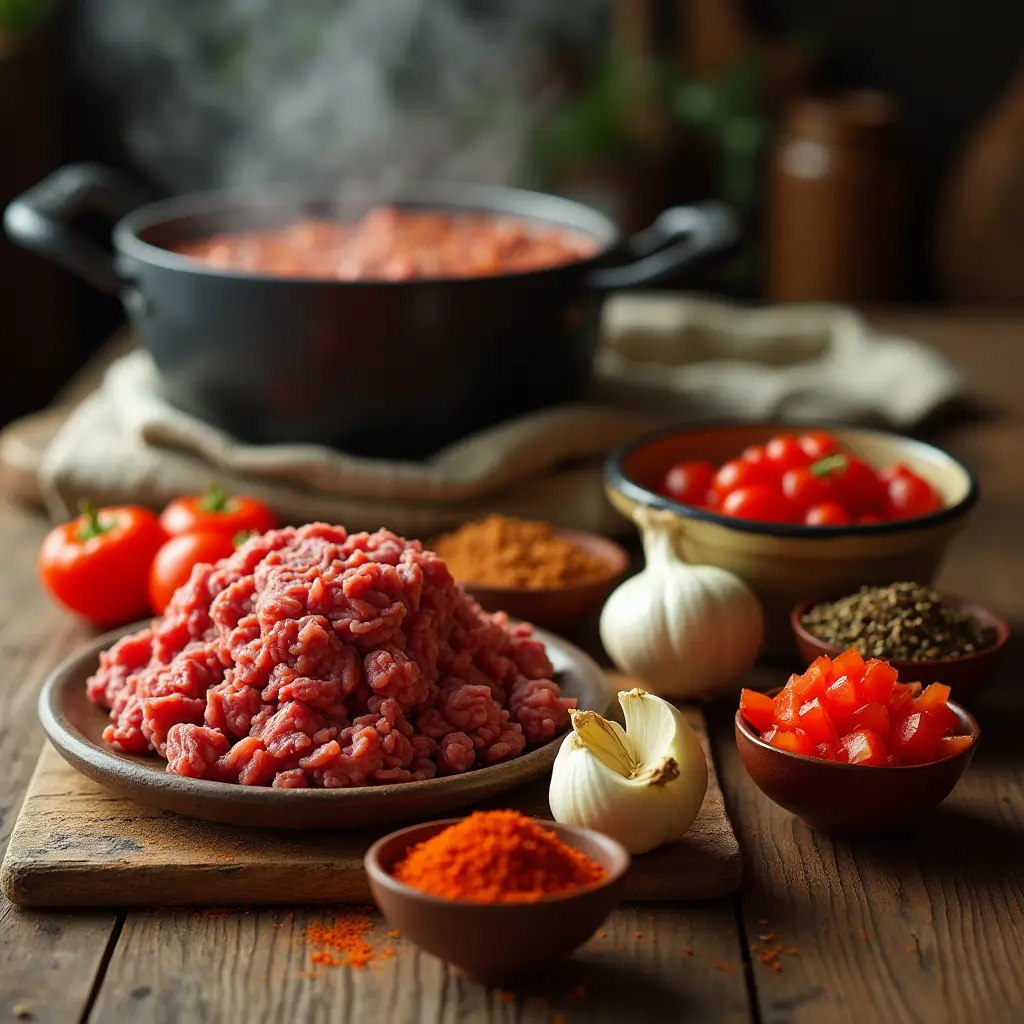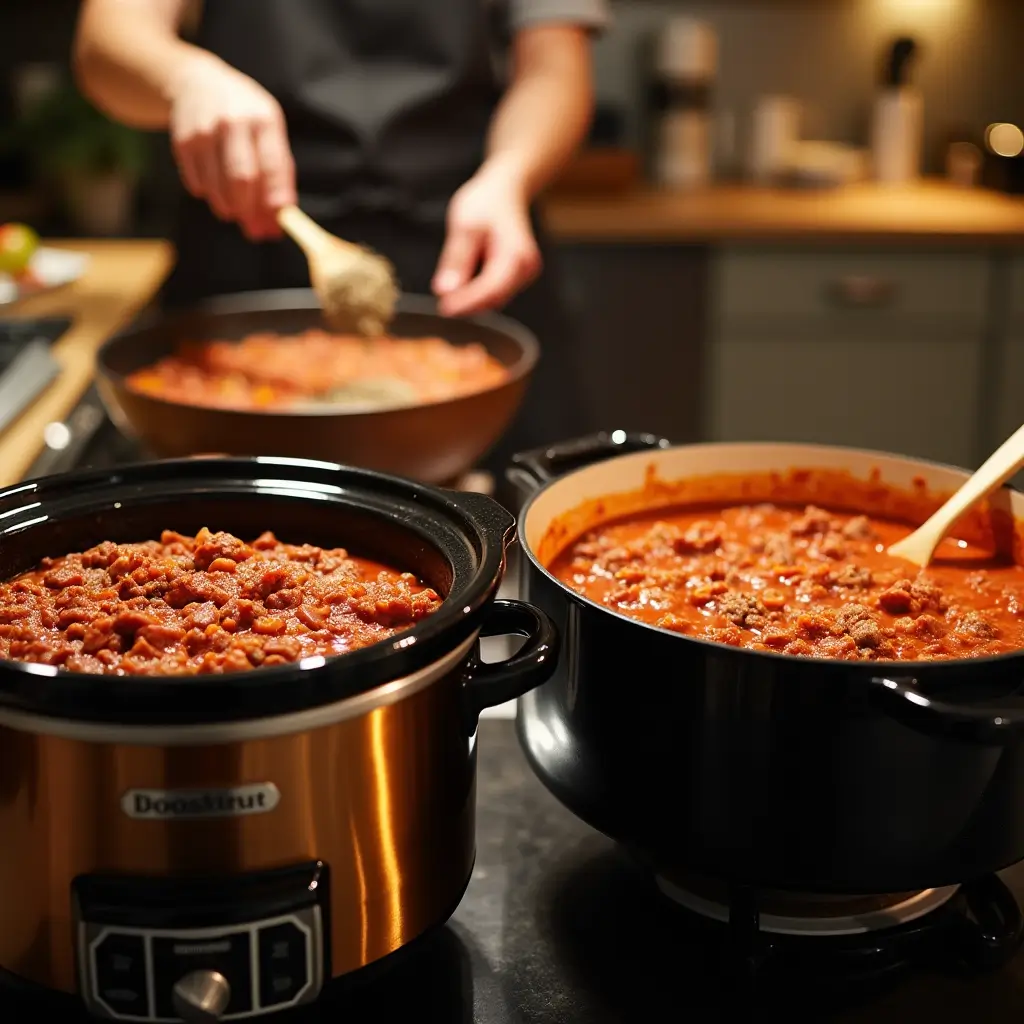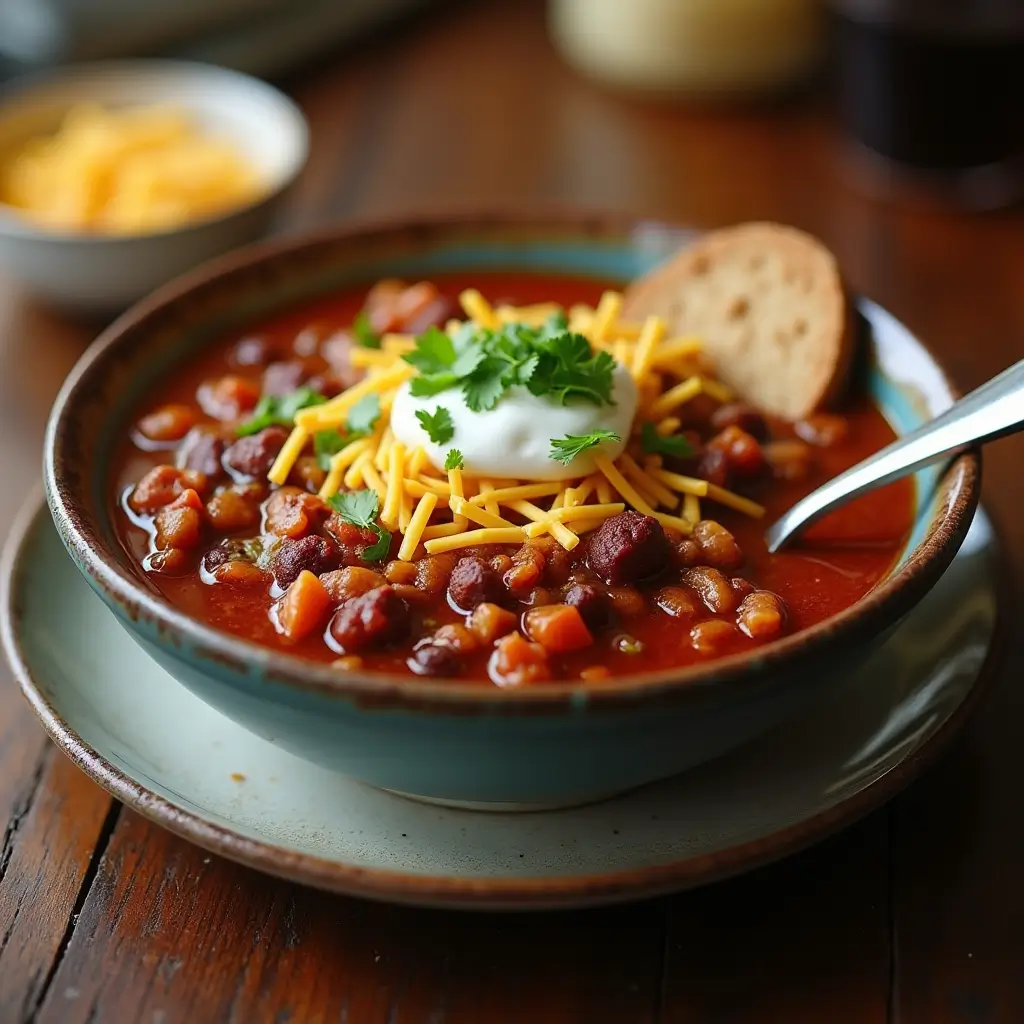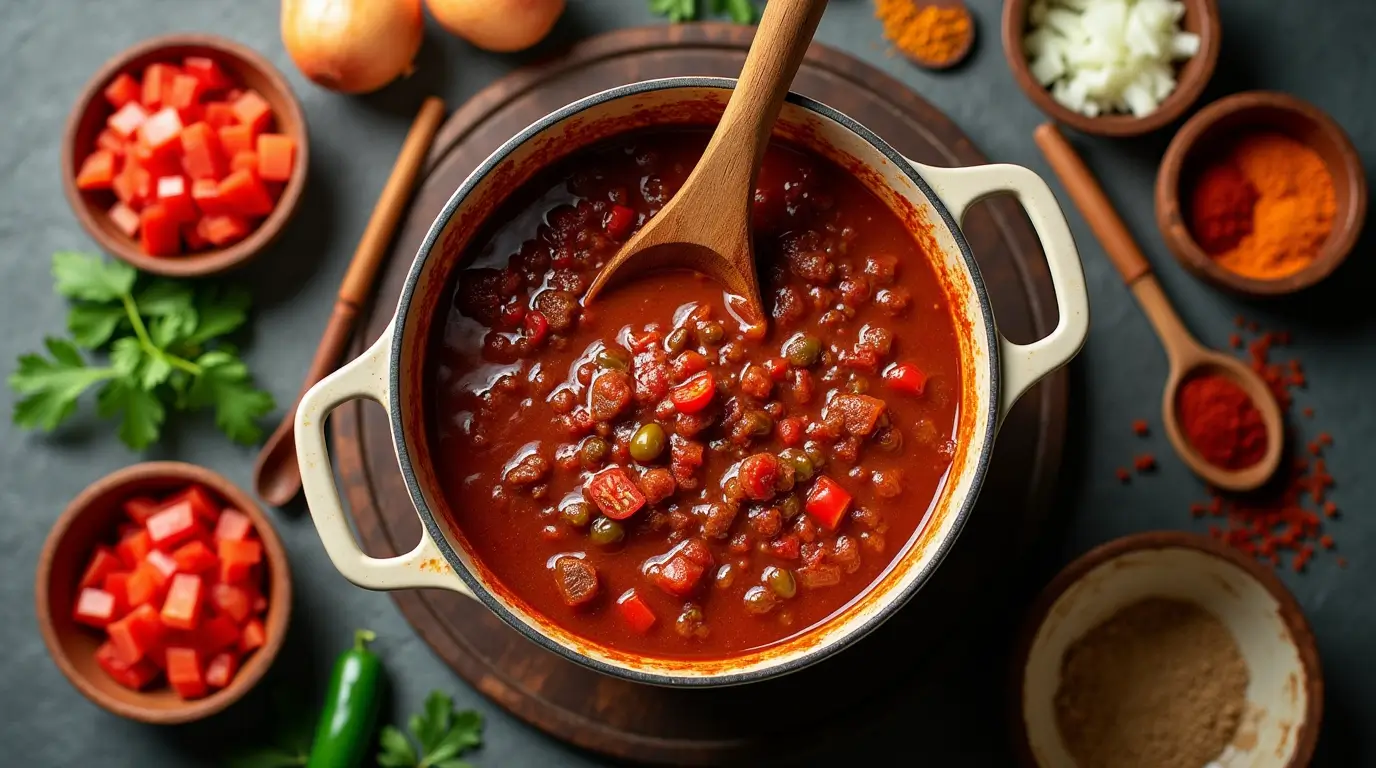Few dishes bring the same warmth and comfort as a well-made bowl of chili. But what is the secret to really good chili? Is it the choice of meat, the balance of spices, or perhaps a hidden secret ingredient that takes it to the next level?
In this article, we’ll uncover the secrets to making the best chili ever. From selecting the right ingredients to cooking techniques that maximize flavor, we’ll break down everything you need to know. Whether you prefer a thick, meaty Texas-style chili or a spiced-up Cincinnati-style version, we’ve got the expert tips, flavor-enhancing hacks, and secret ingredients to make your chili stand out.
Table of contents
- The Fundamentals of Making Really Good Chili
- Essential Spices and Seasonings for the Best Chili
- Secret Ingredients That Take Chili to the Next Level
- Cooking Techniques for the Best Chili Ever
- Common Chili Mistakes and How to Avoid Them
- Popular Chili Variations and Regional Styles
- Frequently Asked Questions About Making the Best Chili
- Conclusion: What is the Secret to Really Good Chili?
The Fundamentals of Making Really Good Chili
Before diving into secret ingredients and advanced cooking techniques, it’s crucial to understand the foundation of any good chili. The right base ingredients, the best choice of meat, and the eternal beans vs. no beans debate all play a role in creating an unforgettable bowl.
Understanding the Core Ingredients
Every great chili starts with a solid foundation of fresh, high-quality ingredients. While recipes may vary, here are the key components you shouldn’t overlook:
- Tomatoes – Whether you use fresh, canned, or tomato paste, they provide a rich and slightly tangy base.
- Meat – Ground beef, chuck roast, pork, or even turkey—each one brings a different texture and flavor.
- Beans (or Not?) – A hot debate! Some regions swear by kidney beans, black beans, or pinto beans, while purists insist on bean-free chili.
- Broth or Stock – Using beef broth, chicken stock, or even beer adds depth and complexity to the sauce.
- Aromatic Veggies – Onions, garlic, and bell peppers lay the groundwork for a flavorful chili.
Using fresh, high-quality ingredients makes all the difference when building the perfect chili base.
Choosing the Right Meat for Maximum Flavor
If you want your chili to be next-level delicious, you need to think beyond just ground beef. Here’s how different meats affect flavor and texture:
- Ground Beef – The classic choice! Opt for an 80/20 mix (80% lean, 20% fat) for the best balance of juiciness and flavor.
- Chuck Roast – Want a chunkier, more robust chili? Slow-cooked beef chuck adds a deep, meaty richness.
- Pork & Sausage – Pork shoulder or spicy chorizo can enhance umami flavors and add a smoky kick.
- Turkey or Chicken – A leaner option that absorbs flavors well but benefits from extra seasoning.
Pro tip: Browning the meat before adding it to your chili helps develop deeper flavors through the Maillard reaction (the same process that gives grilled meat its delicious crust).
Beans or No Beans? The Great Chili Debate
One of the biggest chili controversies—to bean or not to bean? Here’s the breakdown:
- Texas-style chili is bean-free, focusing purely on meat and spices.
- Midwestern & Southern chili commonly includes kidney beans or black beans for added texture and heartiness.
- Vegetarian & vegan chili swaps meat for a mix of beans, lentils, and even quinoa.
There’s no wrong way to enjoy chili—just personal preference. If using beans, make sure to drain and rinse canned beans to avoid excess sodium.

Essential Spices and Seasonings for the Best Chili
If you’ve ever wondered, What is the Secret to Really Good Chili?, the answer often lies in the spices and seasonings. The right blend can turn an ordinary chili into something bold, rich, and unforgettable. But it’s not just about adding heat—balancing flavors is key. Let’s break down the must-have spices and how to use them for maximum impact.
Key Spices Every Chili Needs
A great chili spice mix creates depth, warmth, and a hint of smokiness. Here are the essential spices every chili recipe should include:
- Chili Powder – The star ingredient, providing heat and smokiness. Use a high-quality blend for the best flavor.
- Cumin – A must-have for its earthy, slightly nutty aroma that enhances the meat’s richness.
- Smoked Paprika – Adds a subtle smokiness without overwhelming the dish.
- Garlic Powder & Onion Powder – These boost umami and create a well-rounded base.
- Black Pepper – A simple yet essential spice that sharpens and enhances other flavors.
Pro tip: Always toast your spices in a dry pan before adding them to your chili. This step helps release their natural oils, intensifying the aroma and taste.
The Role of Herbs: Oregano, Cumin, and More
While spices add heat and depth, herbs bring balance and complexity. Here’s what to include:
- Oregano – A small amount adds a slightly bitter, peppery undertone that works beautifully with tomatoes.
- Bay Leaves – These help develop a slow-cooked, aromatic depth (just remember to remove them before serving!).
- Coriander – If you like a touch of citrusy warmth, ground coriander is a fantastic addition.
When using herbs, less is more—they should complement, not overpower, the chili.
How to Balance Heat and Flavor
Adding heat is easy, but getting the right level of spiciness takes skill. If you want chili with a kick that doesn’t burn out your taste buds, follow these tips:
- Use fresh chilies like jalapeños or serranos for bright heat.
- Try chipotle peppers in adobo sauce for a smoky, medium-spiced chili.
- Add cayenne pepper or red pepper flakes gradually—a little goes a long way.
- If you overdo the spice, balance it with a bit of honey, brown sugar, or a splash of dairy (like sour cream or milk).
A perfect chili isn’t just about heat—it’s about balancing bold spices with a deep, rich taste. Now, let’s take it up a notch with some secret ingredients that will make your chili unforgettable!
Secret Ingredients That Take Chili to the Next Level
Have you ever tasted chili that had a little something extra—a flavor so deep and satisfying that you couldn’t quite put your finger on it? That’s because some cooks have discovered the magic of unexpected, game-changing ingredients. If you’re still asking, What is the Secret to Really Good Chili?, you’re about to find out.
Unexpected Sweeteners: Chocolate, Maple Syrup, and More
Sweetness in chili? Absolutely. A touch of sweetness balances the acidity of tomatoes and the heat from spices. Some surprising ingredients that work wonders include:
- Dark Chocolate or Cocoa Powder – Adds richness and a slightly bitter depth that enhances the overall flavor.
- Maple Syrup or Honey – Just a teaspoon can round out the spices and give chili a warm, caramelized note.
- Brown Sugar – Helps mellow out acidity and create a more complex, layered taste.
The key here is subtlety—a little goes a long way!
The Power of Umami: Fish Sauce, Soy Sauce, and Mushrooms
One of the best-kept secrets in chili-making is umami—that deep, savory taste that makes food incredibly satisfying. Here’s how to add it to your chili:
- Fish Sauce – Just a dash can boost the meatiness of your chili without making it taste fishy.
- Soy Sauce or Worcestershire Sauce – Both add depth, saltiness, and a bit of tangy complexity.
- Dried Mushrooms or Mushroom Powder – These intensify the earthy, meaty quality of chili without adding extra fat.
If you’ve ever wondered why some chili just tastes better, umami ingredients are likely the reason.
Boosting Depth with Coffee, Beer, and Cocoa Powder
Some of the most unexpected chili ingredients are beverages, but don’t underestimate their power!
- Coffee – A small amount of brewed coffee adds smokiness and enhances the roasted flavors in the chili.
- Dark Beer – A rich stout or porter complements the meatiness and adds a smooth, slightly bitter complexity.
- Cocoa Powder – Not just for sweetness—it adds a rich depth that balances acidity and spice.
These ingredients work best when simmered for a while, allowing them to blend into the overall flavor profile.
Cooking Techniques for the Best Chili Ever
Even with the perfect blend of spices and ingredients, how you cook your chili can make or break its flavor. What is the Secret to Really Good Chili? Besides using the right ingredients, it’s all about technique. Let’s explore the methods that ensure every bite is packed with rich, bold taste.
The Importance of Slow Cooking and Simmering
Patience is key! A long, slow simmer allows the flavors to meld together and intensifies the depth of the chili. Here’s why:
- Breaks down tough meats – If using chuck roast or brisket, slow cooking makes it melt-in-your-mouth tender.
- Enhances spice infusion – Heat helps the spices blend into the sauce, creating a more unified taste.
- Thickens naturally – The longer chili simmers, the more liquid reduces, giving it a heartier texture.
Pro tip: Aim for at least 2 hours of simmering for the best results. If you have time, letting it cook for 4-6 hours is even better!
Blooming Spices for Maximum Flavor Extraction
Before adding your spices to the chili, take a moment to “bloom” them—this means lightly toasting them in oil. Doing so:
- Releases essential oils that intensify their natural aroma.
- Prevents a raw, powdery taste that sometimes happens when spices aren’t cooked properly.
- Creates a deeper, richer chili base right from the start.
Try sautéing your chili powder, cumin, and paprika in a bit of oil for about 30 seconds before adding other ingredients. This small step makes a world of difference.
Using Layered Cooking for a Richer Taste
Instead of adding all ingredients at once, layer them gradually:
- Start with aromatics – Sauté onions, garlic, and peppers first.
- Brown the meat – Cook it separately before adding it to the pot.
- Bloom the spices – Stir them in before adding tomatoes or broth.
- Add liquid gradually – Pour in broth or beer a little at a time to control thickness.
- Finish with fresh elements – Stir in a splash of vinegar, lime juice, or fresh herbs at the end to brighten up the flavor.

This step-by-step method helps develop a layered, complex chili instead of one that tastes flat.
Common Chili Mistakes and How to Avoid Them
Even experienced cooks sometimes struggle with chili that’s too spicy, thin, or bland. If you’ve ever asked yourself, What is the Secret to Really Good Chili?, part of the answer is avoiding common pitfalls. Let’s go over the most frequent mistakes and how to fix them.
Over-Spicing or Under-Spicing
Finding the perfect spice balance can be tricky. If your chili is:
- Too bland – Try adding more cumin, smoked paprika, or a splash of Worcestershire sauce to deepen the flavor.
- Too spicy – Reduce heat with a spoonful of honey, sugar, or a bit of dairy (like sour cream).
- Too salty – Add a raw potato to absorb excess salt, then remove it before serving.
Pro tip: Always start with less spice—you can add more, but you can’t take it out!
Choosing the Wrong Cooking Method
Some cooking methods don’t bring out chili’s full potential. Here’s how to get the best results:
- Avoid high heat – Boiling chili makes the meat tough and over-extracts bitterness from spices.
- Skip shortcuts – Rushing the cooking process doesn’t allow flavors to develop properly.
- Don’t forget to stir – Occasional stirring prevents chili from sticking to the bottom and burning.
For easy, foolproof cooking, a slow cooker or Dutch oven is your best bet.
Not Allowing Enough Time for the Flavors to Develop
Chili gets better with time. The longer it sits, the more the flavors blend. Here’s how to make the most of it:
- Make chili a day ahead – Let it rest overnight for an even richer taste.
- Use leftovers creatively – Chili tastes fantastic as a topping for baked potatoes, nachos, or chili dogs.
- Store it properly – Keep chili in an airtight container in the fridge for up to 4 days, or freeze it for future meals.
If your chili is missing something, try letting it sit for an hour or two. You’ll be amazed at how much the flavors improve!
For more delicious chili recipes, check out this Enchilada Sauce & Ground Beef Chili Recipe on Kamala Recipes!
Popular Chili Variations and Regional Styles
Chili isn’t a one-size-fits-all dish. Across different regions, people have developed unique styles that reflect local flavors and traditions. If you’re still asking, What is the Secret to Really Good Chili?, the answer might just depend on where you are and what style you prefer. Let’s explore some of the most popular variations.
Texas-Style Chili: Meat-Focused and Bean-Free
Texans take their chili seriously, and one rule reigns supreme: no beans allowed! Texas-style chili, also called chili con carne, is all about:
- Big chunks of beef – Usually, chuck roast or brisket is slow-cooked until tender.
- A deep, smoky flavor – Cumin, chili powder, and smoked paprika create richness.
- A thick, hearty texture – This chili is all meat, no fillers.
If you love bold, meaty flavors, this is the chili for you!
Cincinnati-Style Chili: A Unique Blend of Spices
Cincinnati-style chili breaks all the rules. It’s served over spaghetti and topped with shredded cheese. What makes it special?
- A sweet and savory spice mix – Cinnamon, cocoa powder, and allspice give it a unique taste.
- A thinner, more sauce-like consistency – This chili is often ladled over noodles or hot dogs.
- Toppings galore – Cheese, onions, beans, and even oyster crackers add crunch.
It may sound unusual, but one bite and you’ll understand why this style has a cult following!
Vegetarian and Vegan Chili Options
Chili doesn’t have to include meat to be flavorful and satisfying. Many plant-based versions deliver just as much depth and texture. Here’s how:
- Beans and lentils – Black beans, kidney beans, or chickpeas add protein and heartiness.
- Mushrooms and walnuts – These ingredients mimic the umami richness of beef.
- Fire-roasted tomatoes and smoky spices – These help create a deep, layered taste.
Even if you’re a meat-lover, you might be surprised by how delicious a well-made vegetarian chili can be!
Frequently Asked Questions About Making the Best Chili
Even with all this information, many home cooks still have burning questions about chili-making. Below are answers to some of the most common ones.
How Do I Make Chili Less Spicy If It’s Too Hot?
If your chili is too fiery, don’t panic! You can tone down the heat with these simple tricks:
- Add dairy – A spoonful of sour cream, yogurt, or shredded cheese helps cool things down.
- Balance with sweetness – A small amount of honey, brown sugar, or even chocolate can counteract the spice.
- Dilute with broth – Adding more liquid can soften the overall heat level.
Can I Make Chili Ahead of Time for Better Flavor?
Absolutely! In fact, chili tastes even better the next day because the flavors have more time to blend. Here’s how to store it:
- Refrigerate for up to 4 days – Keep it in an airtight container.
- Freeze for up to 3 months – Let it cool completely before freezing.
- Reheat gently – Simmer on low heat to bring back the best flavor.
Pro tip: If you’re making chili for a big event, cook it a day in advance for maximum depth!
What Are the Best Toppings to Serve with Chili?
Toppings can take your chili from good to great! Some of the best options include:
- Shredded cheese – Cheddar, Monterey Jack, or even pepper jack.
- Fresh herbs – Cilantro or green onions brighten the dish.
- Crunchy add-ons – Tortilla chips, oyster crackers, or even cornbread crumbles.
- Cool contrasts – Sour cream or avocado balance the heat.
Experiment with toppings to find your perfect combination!
Conclusion: What is the Secret to Really Good Chili?
So, what is the secret to really good chili? The truth is, there isn’t just one! The best chili is all about layering bold flavors, using the right spices, cooking it low and slow, and even adding a few secret ingredients for depth and complexity.
By now, you’ve learned that:
Quality ingredients matter – The right meat, tomatoes, and beans (or no beans!) make a difference.
Spices and seasonings are key – A balanced mix of cumin, chili powder, and smoked paprika takes chili to the next level.
Secret ingredients can enhance the flavor – A touch of chocolate, coffee, or soy sauce can add surprising depth.
Cooking techniques make or break chili – Simmering slowly and layering ingredients correctly results in rich, complex flavors.
There’s no single “right” way to make chili – Whether you love Texas-style, Cincinnati-style, or a vegetarian twist, the best chili is the one that suits your taste!

Now, it’s your turn! Grab your ingredients, experiment with flavors, and create a chili that’s uniquely yours. And if you’re looking for more inspiration, check out this Enchilada Sauce & Ground Beef Chili Recipe for a delicious variation!

